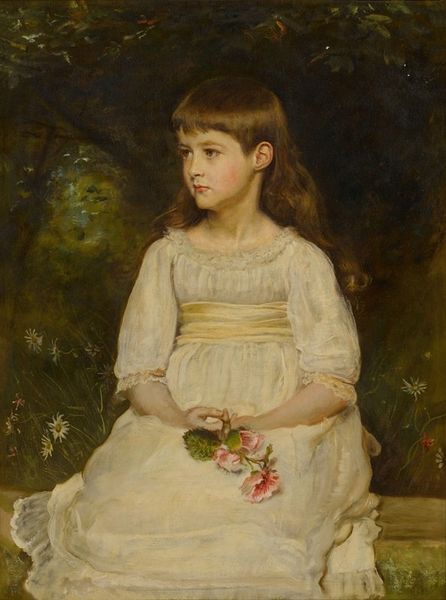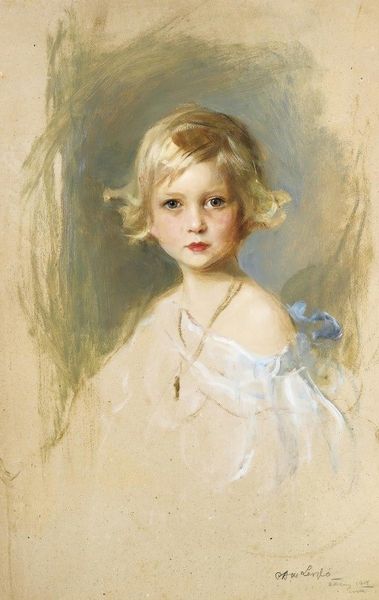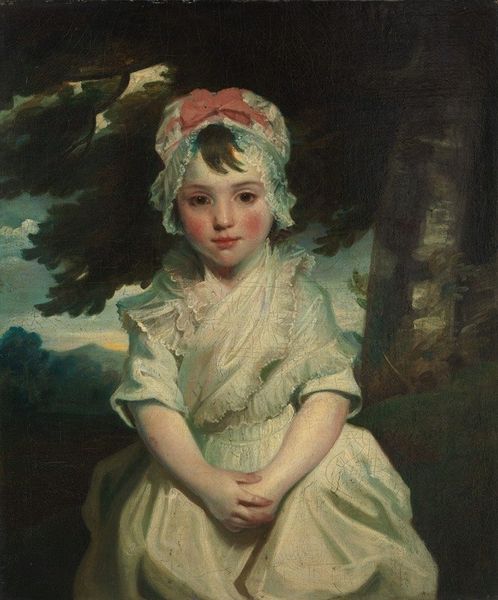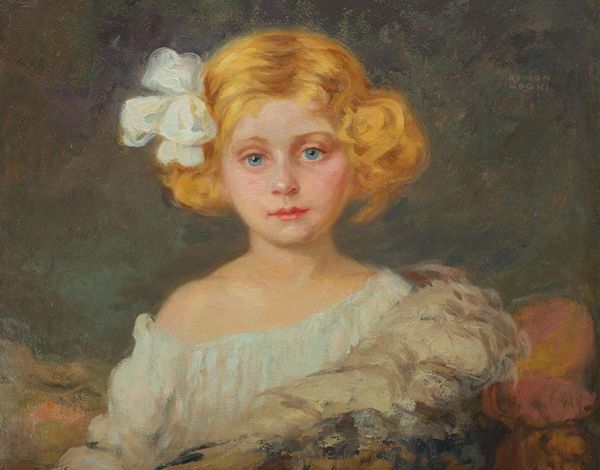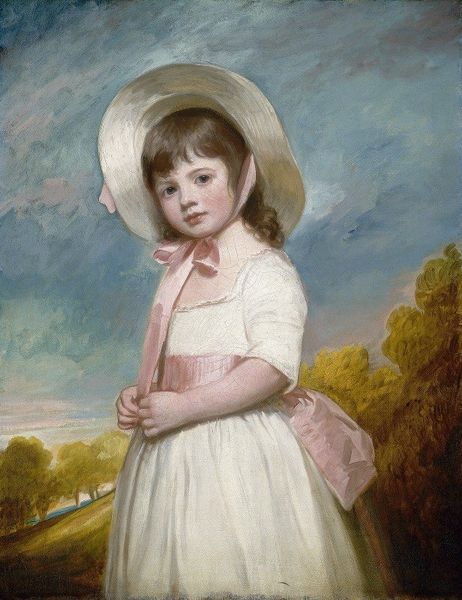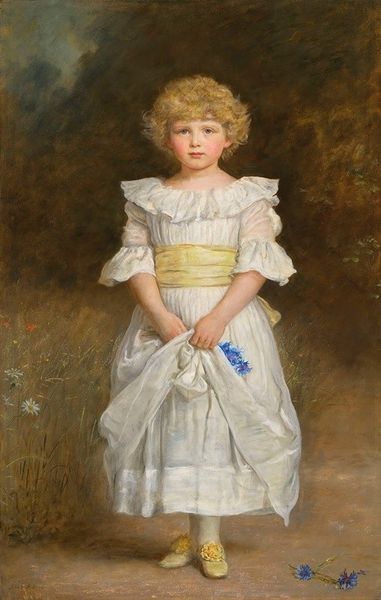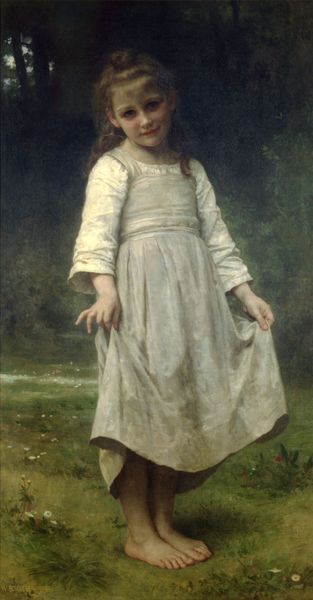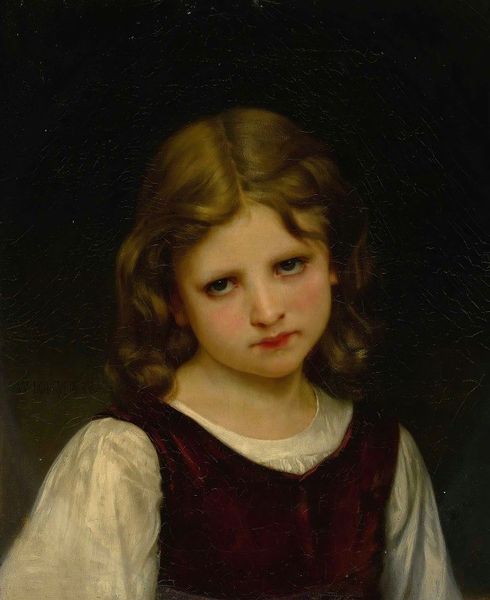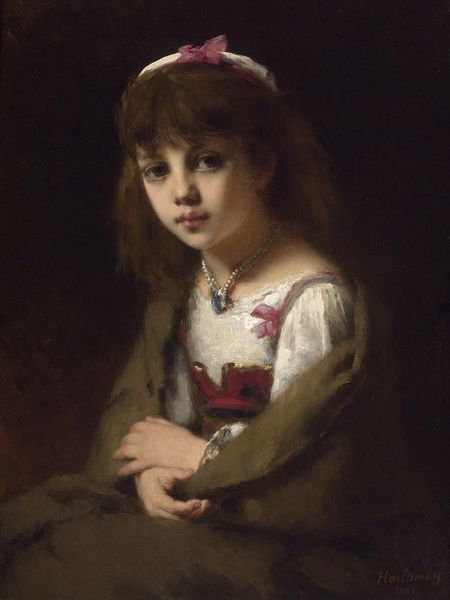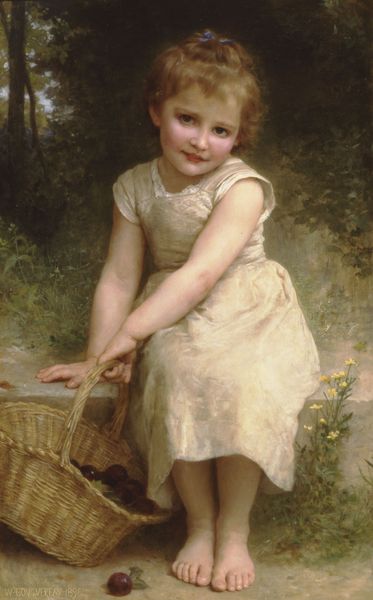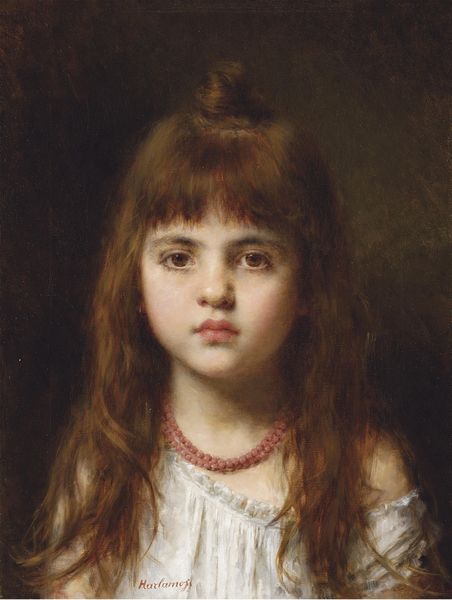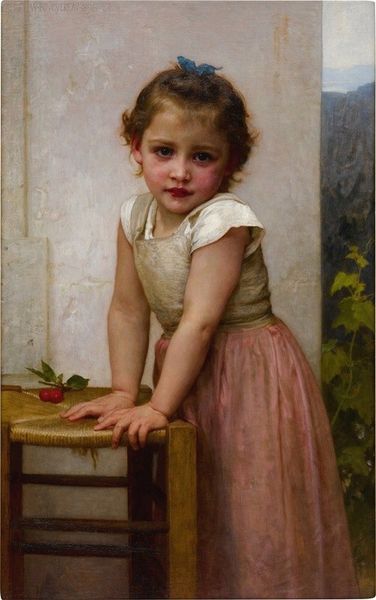
painting, oil-paint
#
portrait
#
painting
#
impressionism
#
oil-paint
#
romanticism
#
academic-art
#
realism
Copyright: Public domain
Editor: So, here we have Paul Peel's "Portrait of Gloria Roberts", an oil painting. It feels quite serene and idealized, almost like a porcelain doll brought to life. The details in the girl’s face are captivating. What do you make of it? Curator: What strikes me is how this seemingly innocent portrait operates within the broader social context of childhood in art. Peel presents us with a very specific vision: the carefully constructed innocence and fragility associated with young, bourgeois girls. How does this image compare to other portrayals of children you may have encountered? Editor: Well, many older portraits seem stiffer, more posed. This feels…sweeter, but perhaps in a calculated way. What's the story behind idealizing children like this? Curator: In the late 19th century, there was a growing sentimentality towards childhood. Consider the burgeoning market for children’s literature, the rise of compulsory education. Simultaneously, there was a fascination with female vulnerability. Portraits like this, displayed in galleries or private homes, reinforced those ideals and the role of women. Do you see anything else that suggests societal status? Editor: The dress, definitely. It’s plain, but very clean and white, suggestive of wealth and leisure. Also, the landscape in the background doesn't seem like any real place. It's almost dream-like. Curator: Precisely! The setting is idealized to further detach the subject from the gritty realities of everyday life. The artist seems more interested in conveying ideas about childhood rather than reflecting the child's reality. Knowing this, does it change how you perceive the artwork's 'sweetness'? Editor: It does. Knowing the context makes it more complex and reveals the values that were being pushed at that time. The painting's now more interesting and less like a sentimental display of childhood, although it is that, too! Curator: Absolutely. By understanding the historical and social forces at play, we move beyond simply admiring its beauty to critically examining the values it promotes. Editor: That's incredibly helpful! I’ll definitely consider these factors in future analyses.
Comments
No comments
Be the first to comment and join the conversation on the ultimate creative platform.
